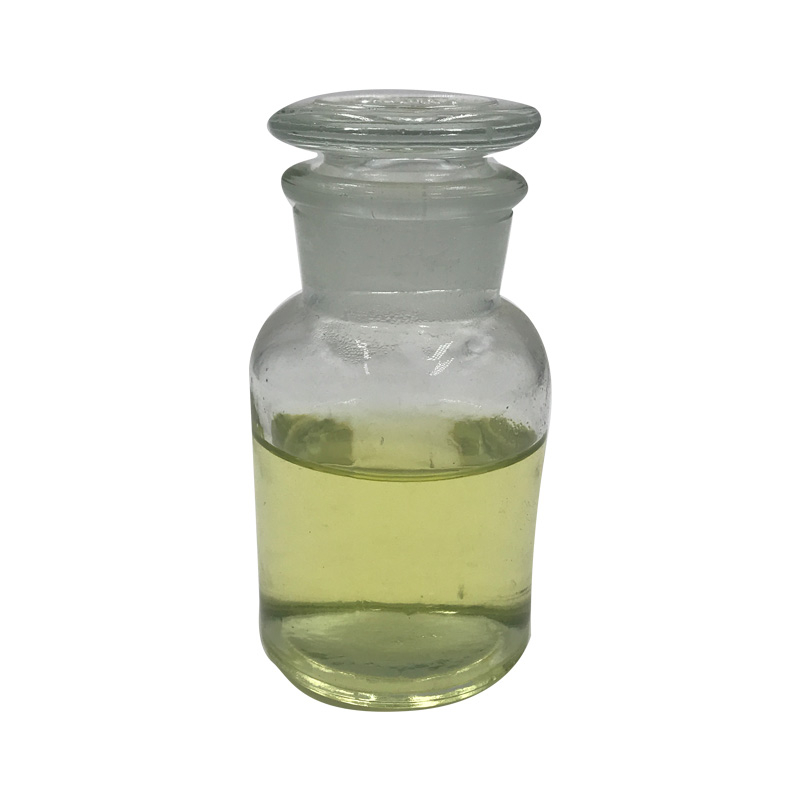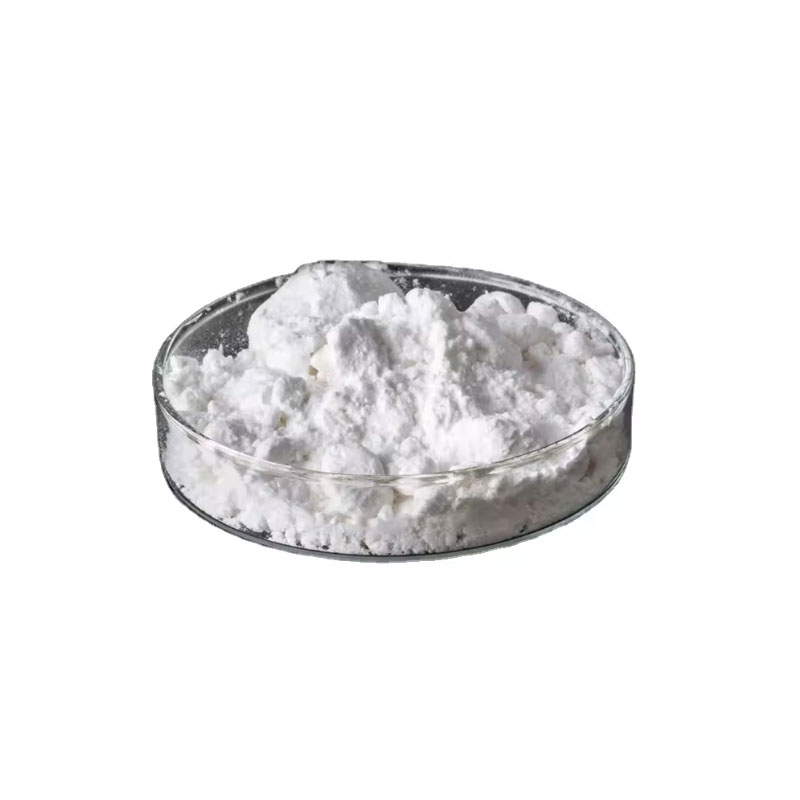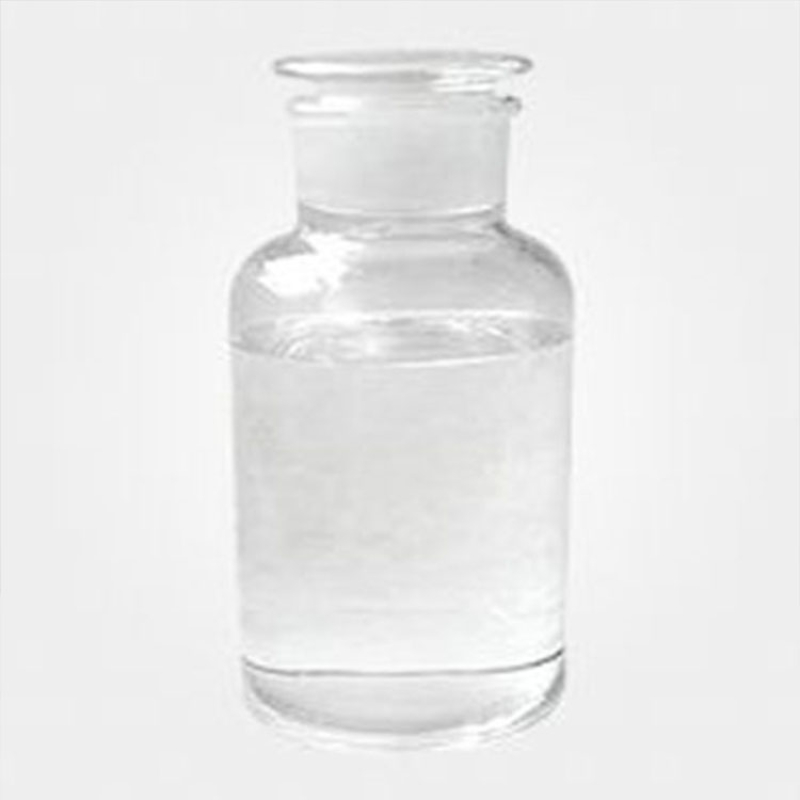Products Description of Benzyltributylammonium chloride CAS#23616-79-7Benzyltri-n-butylammonium chloride CAS number: 23616-79-7. Molecular weight: 311.93. LogP: 2.40770. Appearance and properties: white to light yellow crystals.
Contate agora
Glacial Acetic Acid (Ch3cooh) - CAS#64-19-7Product Description:Welcome to our comprehensive page dedicated to Glacial Acetic Acid, a key chemical compound with the chemical formula C2H4O2 and globally recognized by the CAS#64-19-7.
Contate agora
Products Description of 2,2'-BITHIOPHENE CAS#492-97-72,2'-BITHIOPHENE is an organic intermediate.2,2'-BITHIOPHENE CAS#492-97-7 Chemical PropertiesMelting point 32-33 °C (lit.)Boiling point 260 °C (lit.)density 1.2455 (rough estimate)refractive index 1.6210 (estimate)Fp >230 °Fstorage temp. Keep in dark place,Inert atmosphere,Room temperatureform powder to lump to clear liquidcolor White or Colorless to Light yellow to GreenWater Solubility Insoluble in water.Sensitive Light SensitiveBRN 3039InChIKeyOHZAHWOAMVVGEL-U
Contate agora
Glacial Acetic Acid CAS# 64-19-7Product Overview:Glacial acetic acid, scientifically known as ethanoic acid, is a colorless, corrosive liquid that plays a pivotal role in various industrial processes. With the chemical formula CH₃COOH and the unique identifier CAS#64-19-7, it is a versatile compound that is widely recognized for its effectiveness in a multitude of applications.Market Relevance:In the dynamic industrial sector, the demand for high-quality chemicals is ever-increasing.
Contate agora
Products Description of Crospovidone CAS#25249-54-1Cross-linked polyvinyl pyrrolidone (PVPP) is a cross-linked polymer that is insoluble in water, strong acids, strong bases and general organic solvents and is polymerized under specific conditions by vinyl pyrrolidone monomers.
Contate agora
Products Description of Acetylacetone CAS#123-54-6This product is a colorless or slightly yellow transparent liquid with an unpleasant odor, m.p.-23℃, b.p.140.4℃, n20D1.4520, relative density 0.975, miscible with organic solvents such as ethanol, ether, chloroform, acetone, glacial acetic acid, and soluble in water.
Contate agora
Bulk Calcium Chloride CAS#10043-52-4Product Description:At our company, we pride ourselves on offering high-quality Calcium Chloride with the chemical formula CaCl2. Our 99% Calcium Chloride is meticulously produced to meet the demands of various industries, ensuring optimal performance and efficiency.
Contate agora
Fumed Silica CAS#112945-52-5Synthetic Amorphous Silica has interesting thickening and thixotropic properties, and an enormous external surface area. It is produced by a vapor phase hydrolysis process using chlorosilanes or substituted silanes such as, silicon tetrachloride in a flame of hydrogen and oxygen. This material is formed and collected in a dry state.
Contate agora
Products Description of Nonylphenol CAS#25154-52-3Nonylphenol is the most toxic and difficult to biodegrade pollutant among environmental hormones, which has a serious impact on the biological endocrine system. Therefore, the research on nonylphenol detection methods and its toxicological effects has important practical significance for ecological protection and human health.Many advances have been made in the sample pretreatment and determination methods of trace NP and other environmental hormones.
Contate agora
Calcium chloride(food grade)CAS#10043-52-4Product Overview:Introducing our high-quality Calcium Chloride (Food Grade) with the CAS#10043-52-4, a versatile compound that is essential in a variety of applications across the food, industrial, and manufacturing sectors.
Contate agora
Calcium chloride CAS# 10043-52-4Product Description:At our company, we pride ourselves on offering high-quality Calcium Chloride with the chemical formula CaCl2. Our 99% Calcium Chloride is meticulously produced to meet the demands of various industries, ensuring optimal performance and efficiency.
Contate agora
Products Description of Pivalic Acid CAS#75-98-9Tert-pentanoic acid is a very important chemical raw material and chemical reagent, as well as an important raw material and intermediate in organic synthesis. It is a white needle-shaped crystal at room temperature, with a melting point of 35.5°C, a boiling point of Chemicalbook 163.8°C, and a density (50°C) of 0.905g. /cm3, easily soluble in alcohol and ether, and difficult to hydrolyze.
Contate agora
Products Description of Antioxidant 1010 CAS#6683-19-8Antioxidant 1010 is a macromolecular multifunctional hindered phenol antioxidant, soluble in benzene, acetone, chloroform, insoluble in water. It is non-polluting, non-coloring, low in volatility, and has good extraction resistance.It is widely used in polyethylene, polypropylene, polyoxymethylene, ABS resin, PS resin, PVC, engineering plastics, rubber and petroleum products, and has excellent antioxidant properties for polypropylene and polyethylene. It can effectively extend the service life of the product.1.
Contate agora
Silicone oil CAS#63148-62-9Silicone oil having a silica structure and is liquid at room temperature and is called as siloxane, referred as silicone oils. The simplest polydimethylsiloxane is as formula [1]. In [2], if the R, R1, R2 are all methyl groups, it is called α, ω-trimethylsilyloxy polydimethylsiloxane, that’s the commonly called silicone oil. It is a linear polymer of a low molecular weight. If R1 and R2 are not a methyl group, then it is not related to this article. Silicone oil is a colorless or light yellow transparent liquid and is odorless and tasteless.
Contate agora
Kojic acid CAS# 501-30-4Kojic acid (CAS# 501-30-4) is a natural compound produced by microbial fermentation and is commonly found in the metabolites of Aspergillus and penicillium fungi. The chemical name was 5-hydroxy-2-hydroxymethyl-4h-pyrano-4-one. The molecular form was ₆. H₆O₄, and the molecular weight was 142.11. Kojic acid has a certain acidity and is relatively stable in acidic and neutral environments.
Contate agora
Products Description of 4-Pyridazinecarboxylic Acid CAS#50681-25-94-Pyridazinecarboxylic Acid is a commonly used chemical raw material, often used as a pharmaceutical intermediate.4-Pyridazinecarboxylic Acid CAS#50681-25-9 Chemical PropertiesMelting point 244.2 °C (dec.) (lit.)Boiling point 404.2±18.0 °C(Predicted)density 1.403±0.06 g/cm3(Predicted)storage temp. Sealed in dry,Room Temperatureform powder to crystalpka3.18±0.10(Predicted)color White to Almost whiteInChIInChI=1S/C5H4N2O2/c8-5(9)4-1-2-6-7-3-4/h1-3H,(H,8,9)InChIKeyJUSIWJONLKBPDU-UHFFFAOYSA-NS
Contate agora
Products Description of Dodecylamine CAS#124-22-1Dodecyl primary amine is also known as 1-aminododecane, laurylamine, and dodecylamine. It is colorless or white crystal. This product is weakly alkaline and can form salts with inorganic or organic acids. Can be quaternized. Reacts with ethylene oxide and can be acetylated. Chemicalbook can be added to unsaturated hydrocarbons. This product can be oxidized with peroxide. Reacts with halogenated carboxylic acids to generate amphoteric compounds. Reacts with carboxylic acid chloride to generate amides.
Contate agora
Products Description of Magnesium oxide CAS#1309-48-4Magnesium oxide is commonly known as magnesia, also known as magnesium oxide. It is a typical alkaline earth metal oxide with the chemical formula MgO. It is a white powder with a melting point of 2852℃, a boiling point of 3600℃ and a relative density of 3.58 (25℃). It is soluble in acid and ammonium salt solutions. It reacts slowly with water to form magnesium hydroxide. It can be dissolved in a carbon dioxide aqueous solution to form magnesium bicarbonate.
Contate agora
Products Description of Cadmium oxide CAS#1306-19-0Cadmium oxide is an oxide of cadmium with the molecular formula CdO, which is carcinogenic. Cadmium oxide can dissolve in acid to form Cd[H2O]62+; it can also dissolve in alkali to form [Cd(OH)4]2??.Cadmium oxide Chemical PropertiesMelting point 900°CBoiling point 1385 °Cdensity 8.15 g/mL at 25 °C(lit.)storage temp. Store below +30°C.solubility 0.0021g/lform powdercolor brownSpecific Gravity8.15OdorOdorlessPH9-10 (H2O)(aqueous suspension)Water Solubility insoluble.
Contate agora
Aluminum Oxide CAS#1344-28-1 The oxide of aluminum is Al2O3. The natural crystalline mineral is called corundum, but the synthetic crystals used for abrasives are designated usually as aluminum oxide or marketed under trade names. For other uses and as a powder, it is generally called alumina.
Contate agora
Products Description of 4-Methylmorpholine N-oxide CAS#7529-22-8N-methylmorpholine oxide (NMMO) solvent is a special excellent solvent with extremely strong solubility for cellulose. It is a crystalline solid or liquid at room temperature, non-toxic, weakly alkaline, and highly hygroscopic. Each molecule can combine with multiple water molecules. It is easy to produce a color change reaction at 120°C, and an overheating reaction at 175°C and is easy to gasify and decompose.
Contate agora
Products Description of Trimanganese tetraoxide CAS#1317-35-7Manganese tetraoxide is a black tetragonal crystal, also known as manganese pyroxene, black manganese ore, and active manganese oxide. It is calcined into crystals and belongs to the spinel class. It is an important industrial raw material.Manganese tetraoxide is mainly used in the electronics industry and is a raw material for producing soft ferrites. Soft ferrites are made by sintering and molding manganese, zinc, and iron oxides in a certain ratio.
Contate agora
Products Description of Lantanium Nitrate CAS#10277-43-7Lanthanum nitrate hexahydrate is a colorless crystalline solid with a distinctive nitrate odor. - It is relatively stable at room temperature, but can decompose when heated to produce toxic nitrous oxide gas.
Contate agora
Products Description of Chromium(VI) oxide CAS#1333-82-0Chromium trioxide is an inorganic compound with the chemical formula CrO3. It is a dark red or dark purple crystalline powder. It is soluble in water, sulfuric acid, nitric acid, ethanol, ether, acetic acid, and acetone. It is mainly used in electroplating industry, pharmaceutical industry, printing industry, tanning and fabric mordant dyeing.On October 27, 2017, the World Health Organization's International Agency for Research on Cancer published a preliminary list of carcinogens for reference.
Contate agora

































